Evgenii Sovetkin
Application of the Singular Spectrum Analysis on electroluminescence images of thin-film photovoltaic modules
Sep 09, 2021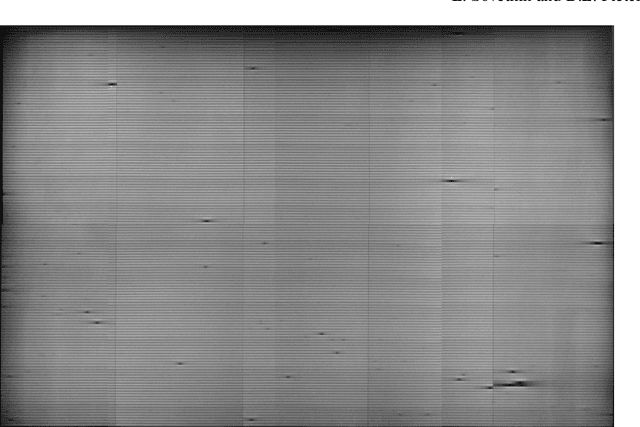
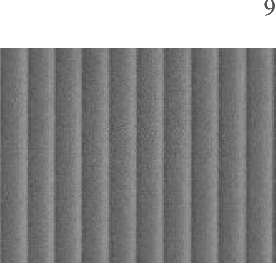
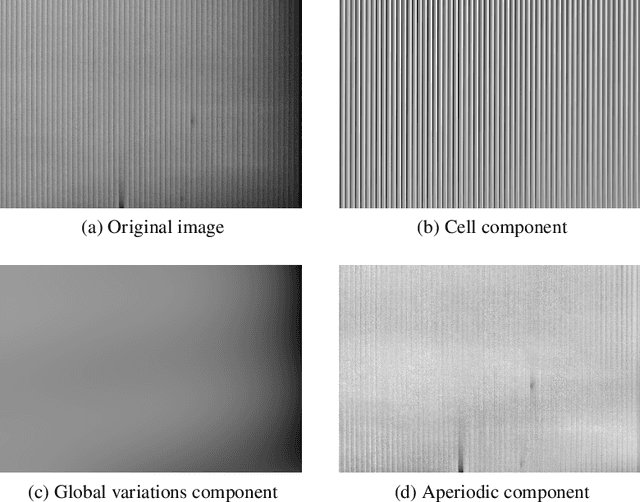
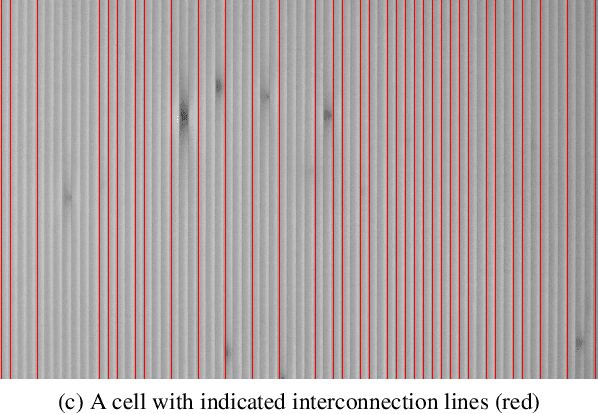
Abstract:This paper discusses an application of the singular spectrum analysis method (SSA) in the context of electroluminescence (EL) images of thin-film photovoltaic (PV) modules. We propose an EL image decomposition as a sum of three components: global intensity, cell, and aperiodic components. A parametric model of the extracted signal is used to perform several image processing tasks. The cell component is used to identify interconnection lines between PV cells at sub-pixel accuracy, as well as to correct incorrect stitching of EL images. Furthermore, an explicit expression of the cell component signal is used to estimate the inverse characteristic length, a physical parameter related to the resistances in a PV module.
Encoder-decoder semantic segmentation models for electroluminescence images of thin-film photovoltaic modules
Oct 15, 2020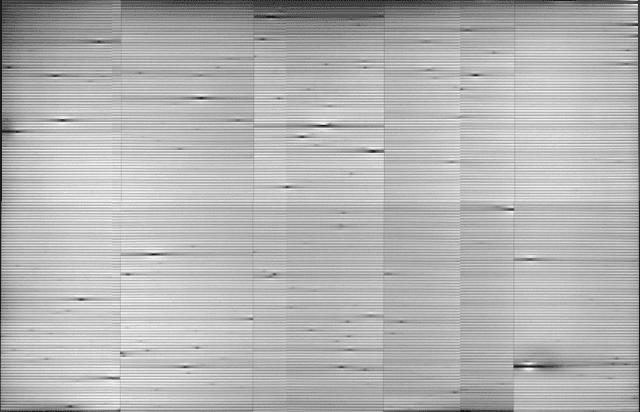
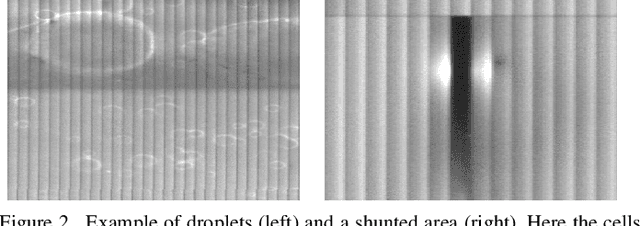

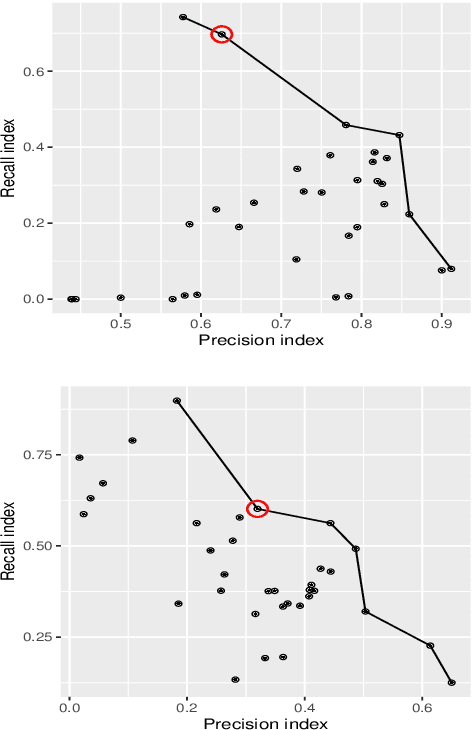
Abstract:We consider a series of image segmentation methods based on the deep neural networks in order to perform semantic segmentation of electroluminescence (EL) images of thin-film modules. We utilize the encoder-decoder deep neural network architecture. The framework is general such that it can easily be extended to other types of images (e.g. thermography) or solar cell technologies (e.g. crystalline silicon modules). The networks are trained and tested on a sample of images from a database with 6000 EL images of Copper Indium Gallium Diselenide (CIGS) thin film modules. We selected two types of features to extract, shunts and so called "droplets". The latter feature is often observed in the set of images. Several models are tested using various combinations of encoder-decoder layers, and a procedure is proposed to select the best model. We show exemplary results with the best selected model. Furthermore, we applied the best model to the full set of 6000 images and demonstrate that the automated segmentation of EL images can reveal many subtle features which cannot be inferred from studying a small sample of images. We believe these features can contribute to process optimization and quality control.
Automatic Processing and Solar Cell Detection in Photovoltaic Electroluminescence Images
Jul 26, 2018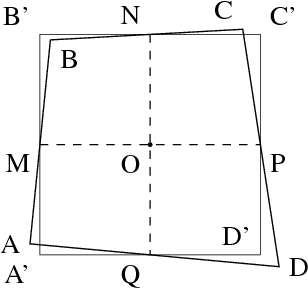
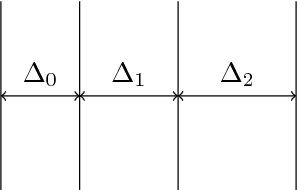
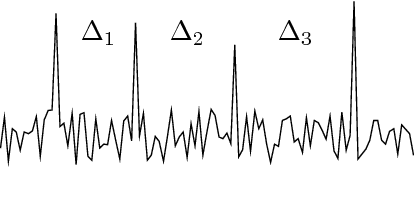
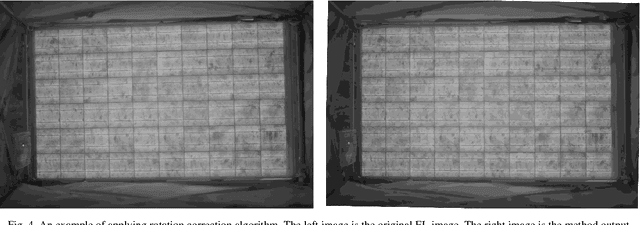
Abstract:Electroluminescence (EL) imaging is a powerful and established technique for assessing the quality of photovoltaic (PV) modules, which consist of many electrically connected solar cells arranged in a grid. The analysis of imperfect real-world images requires reliable methods for preprocessing, detection and extraction of the cells. We propose several methods for those tasks, which, however, can be modified to related imaging problems where similar geometric objects need to be detected accurately. Allowing for images taken under difficult outdoor conditions, we present methods to correct for rotation and perspective distortions. The next important step is the extraction of the solar cells of a PV module, for instance to pass them to a procedure to detect and analyze defects on their surface. We propose a method based on specialized Hough transforms, which allows to extract the cells even when the module is surrounded by disturbing background and a fast method based on cumulated sums (CUSUM) change detection to extract the cell area of single-cell mini-module, where the correction of perspective distortion is implicitly done. The methods are highly automatized to allow for big data analyses. Their application to a large database of EL images substantiates that the methods work reliably on a large scale for real-world images. Simulations show that the approach achieves high accuracy, reliability and robustness. This even holds for low contrast images as evaluated by comparing the simulated accuracy for a low and a high contrast image.
 Add to Chrome
Add to Chrome Add to Firefox
Add to Firefox Add to Edge
Add to Edge